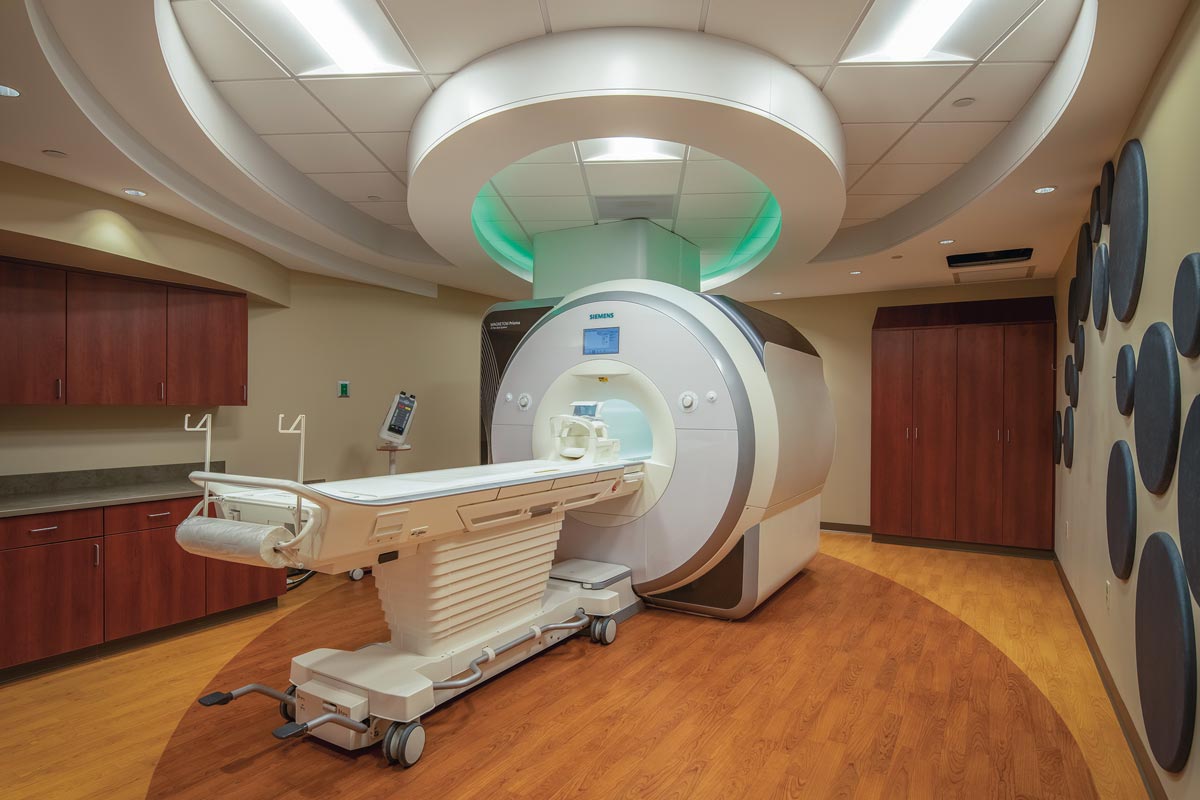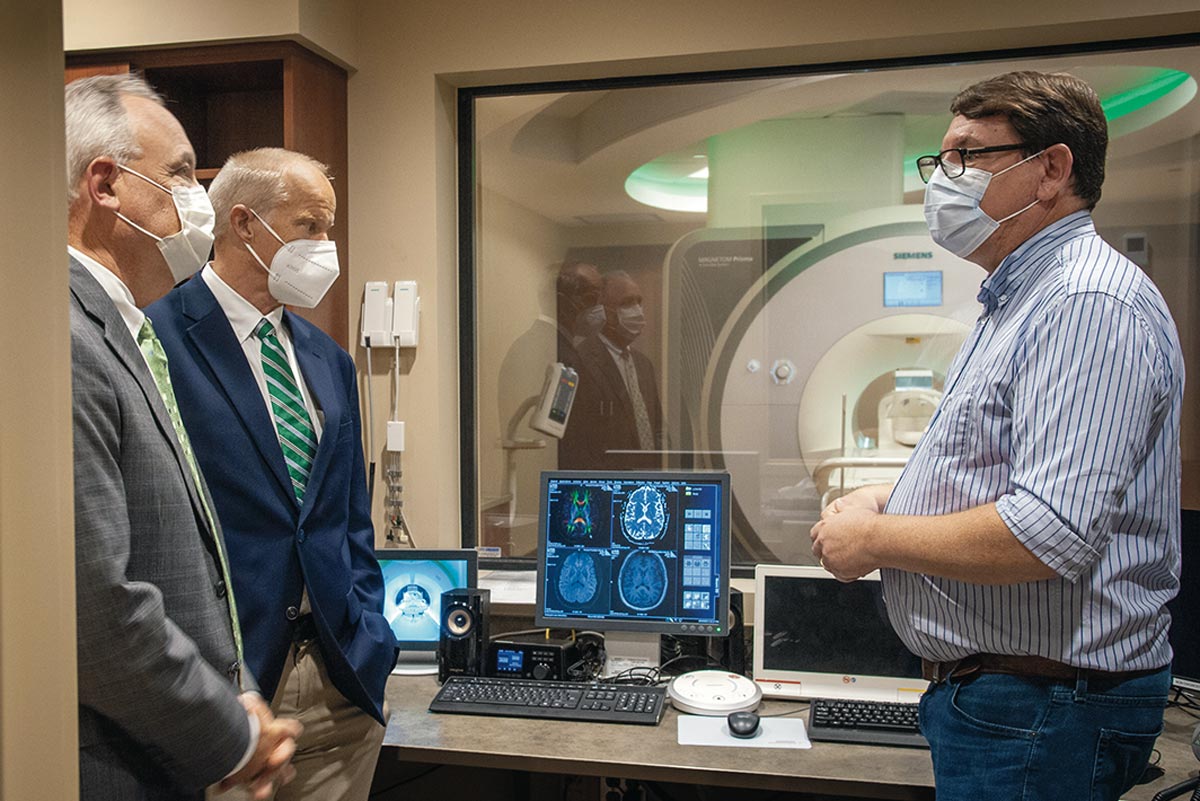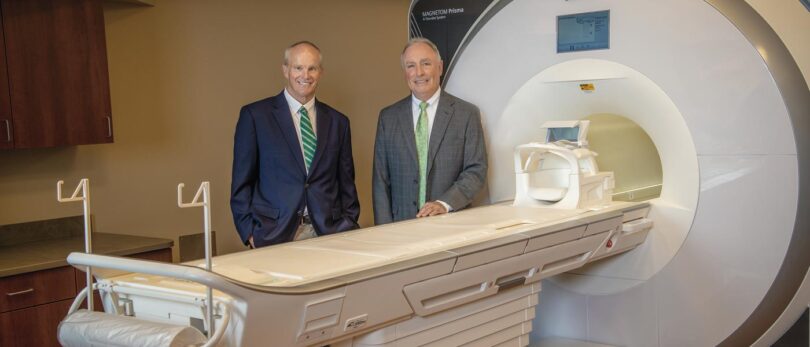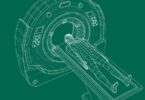To further enhance the quality and availability of top clinical services in the Southern Tier, UHS has partnered with Binghamton University to create the Binghamton Brain and Body Imaging Research Center. Located at UHS Vestal, the center features an advanced magnetic resonance imaging (MRI) scanner. The scanner allows UHS providers to diagnose patients and University faculty to conduct academic and clinical research at UHS’ facility at 4417 Vestal Parkway East. “As the two largest employers in the region, UHS and Binghamton University have a history of working together to serve and invest in the community,” said John M. Carrigg, president and chief executive officer of UHS. “This partnership between our two organizations, specifically this scanner, will offer UHS physicians the latest diagnostic imaging technology available today and open new avenues of research for University faculty.”

Located at UHS Vestal campus, the new scanner makes Broome County home to one of the most advanced MRI technologies in the region.
New tech benefits patients, physicians
The new MRI helps diagnose brain disease and disorders, orthopedic injuries and cardiovascular disease — offering a level of service previously available only in Syracuse, Rochester and New York City. “It’ll benefit both patients in the community and physicians,” said Prakash Ramanathan, director of Clinical Operations and Neuroscience Services at UHS. “Because this is a cutting-edge imaging technology that no one else in the region has for cardiac MRIs, we’re the only facility to offer the technology and service within a 300-mile radius.”
UHS cardiology patients will reap the benefits of quality care closer to home, and UHS physicians will now have an advantage in providing care. “Physicians who do highly complex surgeries and procedures, such as cardiologists and neurosurgeons, rely on complex imaging to diagnose and treat their patients,” Mr. Ramanathan adds. “It’s one of the things that they look for when deciding where they want to establish their practice. They want access to the tools to do their job.”
A boon for research
Binghamton University faculty and other partners will use the scanner to contribute to biomedical research, particularly in the areas of neuroscience and computer science. Current research opportunities focus on innovative studies of the human brain to expand knowledge of brain disorders such as Alzheimer’s disease and autism. “I like to say that it’s not just a huge step forward for the region, but a number of steps forward,” said J. David Jentsch, professor of Psychology at the University.
Prof. Jentsch adds that the scanner will provide students and faculty with technology not typically available elsewhere. “It’s not uncommon for a university acting alone or for a healthcare provider acting alone to acquire new technology, but because of this partnership, we’re able to do both at once,” he said. “And that’s why this partnership is so effective.”
The partnership also builds on a foundation where the benefits can come full circle throughout the community. “From a variety of perspectives, cardiac imaging and brain diagnostic exams will be vastly expanded,” the professor noted. “Those streams feed into the community and have a positive impact because, after all, this University is where our community sends their sons and daughters to be future researchers, teachers and psychologists,” Prof. Jentsch said. “More educational and research opportunities will be available. And people will get better healthcare because they have a more advanced form of diagnostic imaging.”

Mr. Stenger and Mr. Carrigg assess the clinical applications of the scanner with Binghamton University Professor of Psychology J. David Jentsch.
A powerful partnership
Prof. Jentsch said the new MRI compares to other, somewhat similar machines like a Ferrari compares to an ordinary car. “There are many different types of MRI instruments that all share the same working properties,” he said. “But this is state-of-the-art from a clinical and a research perspective.”
A few examples that make this MRI different are that it can produce images with superior resolution all while saving time because it is so fast — a huge win for patients who may feel anxious about needing an MRI scan in the first place. “It not only benefits the organization because you can do more exams per day,” Prof. Jentsch said. “But if you’re taking an MRI exam as a patient, you know that being in the scanner is not the most pleasant. A shorter exam benefits the patient because we get better clinical information in a shorter period.”
Working together to get advanced, cutting-edge technology has only made the partnership between UHS and Binghamton University flourish. “This is a unique collaboration between two large organizations that you don’t often see,” said Mr. Ramanathan. “For the community to see and hear how two organizations are working together to benefit their stakeholders and share their resources speaks to the outstanding working relationship between the two.”
LEARN MORE
For more information, visit nyuhs.org and binghamton.edu/centers/imaging.





